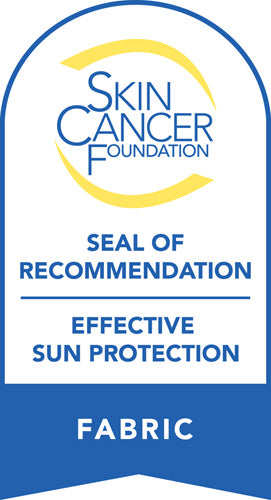When it comes to sun protection, you probably think about SPF levels on your sunscreen. But did you know that the UPF rating system for clothing is just as important?
Today we're diving into the role of the UPF rating system in sun protection. We'll take a closer look at UV radiation, the UPF rating, and how to choose the best UPF-rated clothing to keep your skin safe from the sun's damaging effects.
Understanding UV Radiation
UV radiation is a type of energy produced by the sun. It reaches the earth in three forms: UVA, UVB, and UVC.
UVC is mostly absorbed by the earth's atmosphere, so we don't need to worry about it. But UVA and UVB can reach our skin and cause damage.
UVA rays penetrate deep into the skin, causing aging and long-term skin damage. They can lead to wrinkles and age spots.
UVB rays are responsible for sunburn and can damage the skin's outer layers. Both types of UV radiation can increase the risk of skin cancer.
When you spend time outside, your skin is exposed to these harmful rays. Even on cloudy days, up to 80% of UV radiation can pass through clouds. This is why it's important to protect your skin whenever you're outdoors.
What Is UPF?
UPF stands for Ultraviolet Protection Factor. It measures how well a fabric blocks UV radiation.
Just like SPF measures the effectiveness of sunscreen, UPF measures the effectiveness of clothing. When you see a UPF rating on clothing, it tells you how much UV radiation can penetrate the fabric and reach your skin.
For example, a shirt with a UPF rating of 50 allows only 1/50th of UV radiation to pass through. This means it blocks 98% of the sun's rays.
The higher the UPF rating, the better the protection. UPF ratings typically range from 15 to 50+. Clothing with a rating of 15 to 24 offers good protection. Ratings between 25 and 39 provide very good protection, and ratings of 40 to 50+ offer excellent protection.
It's important to note that UPF and SPF are not the same. SPF measures how long sunscreen will protect your skin from UVB rays.
But UPF measures how much UV radiation, both UVA and UVB, a fabric blocks. Wearing UPF-rated clothing is an effective way to protect your skin, especially if you spend a lot of time outdoors.
The Role of the UPF Rating System in Sun Protection
The UPF rating system measures how much UV radiation a fabric blocks. To determine the UPF rating, fabrics undergo testing that involves exposing the fabric to UV light and measuring how much passes through. The results show how effective the fabric is at blocking UV radiation.
Fabrics with a UPF rating of 15 to 24 offer good protection, blocking about 93-96% of UV rays. Ratings of 25 to 39 provide very good protection, blocking 96-97% of UV rays.
A UPF rating of 40 to 50+ offers excellent protection, blocking 98% or more of UV rays. The higher the UPF number, the better the protection.
Several factors influence a fabric's UPF rating. The type of fiber is important.
Fabrics like polyester and nylon tend to have higher UPF ratings. The weave or knit of the fabric also matters. Tighter weaves or knits offer better protection because they let less UV light through.
Color plays a role, too. Darker colors absorb more UV radiation than lighter ones. Special treatments can enhance a fabric's UV protection. Some fabrics are treated with UV-inhibiting ingredients during manufacturing.
It's important to remember that wear and tear can affect a fabric's UPF rating. Stretching, washing, and general use can reduce its effectiveness over time.
Benefits of UPF-rated Clothing
Wearing UPF-rated clothing has many benefits. It offers reliable sun protection without needing to reapply like sunscreen.
Once you put on a UPF-rated shirt or hat, you're protected for as long as you wear it. This is especially useful for long outdoor activities like hiking, swimming, or gardening.
UPF-rated clothing covers more skin than sunscreen alone. It can protect areas that are often missed when applying sunscreen, like your back, shoulders, and legs. Long-sleeve shirts, pants, and wide-brimmed hats made from UPF-rated fabrics can significantly reduce your overall UV exposure.
These clothes are designed to be comfortable and breathable. Many brands offer stylish options that are lightweight and moisture-wicking.
This means you can stay cool and protected without feeling bulky or overheated. Some UPF-rated clothing is also water-resistant, making it a good choice for swimming or other water activities.
Wearing UPF-rated clothing can help reduce the risk of skin cancer and other sun-related skin issues. It provides consistent protection, which is especially important for people with sensitive skin or those who are prone to sunburns.
Choosing the Right UPF-rated Clothing
When choosing UPF-rated clothing, aim for clothing with a UPF of 30 or higher for the best coverage. The fabric type is also important. Polyester and nylon usually offer higher UPF ratings compared to cotton or linen.
Pay attention to the fit of the clothing. Loose-fitting garments are better because they don't stretch as much, which can reduce their protective ability.
Look for clothes that cover as much skin as possible, like long-sleeve shirts, pants, and wide-brimmed hats. These provide more protection than short sleeves or shorts.
Check for any certifications or labels that verify the UPF rating. Some brands may test their fabrics through independent labs to ensure their effectiveness. This can give you confidence that the clothing will perform as promised.
Lastly, consider the style and comfort of the clothing. You're more likely to wear it regularly if it fits well and looks good. Many brands offer fashionable and functional options that are breathable and comfortable for everyday wear. By choosing the right UPF-rated clothing, you can enjoy the outdoors while staying protected from harmful UV rays.
Keeping Safe From Harmful Rays
Understanding the role of the UPF rating system in sun protection is essential for keeping your skin safe.
After 15 years, BloqUV has emerged as a market leader in sun protection. Our products are unique in design, fit, and sun protection technology. They're moisture-wicking and quick-dry, allowing for a wide range of uses on land and water.
Get in touch today to find out how we can help you protect your skin!



